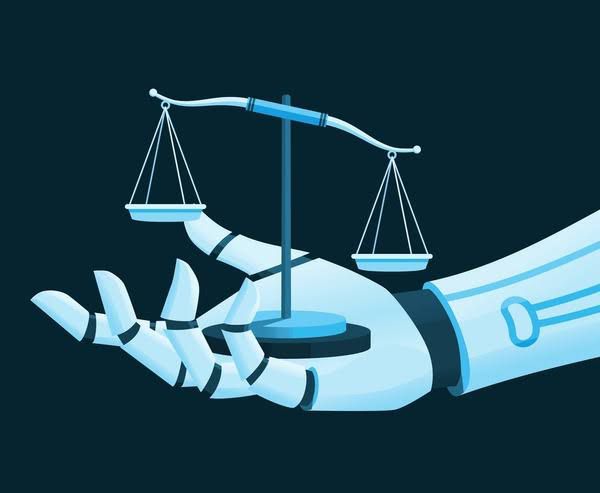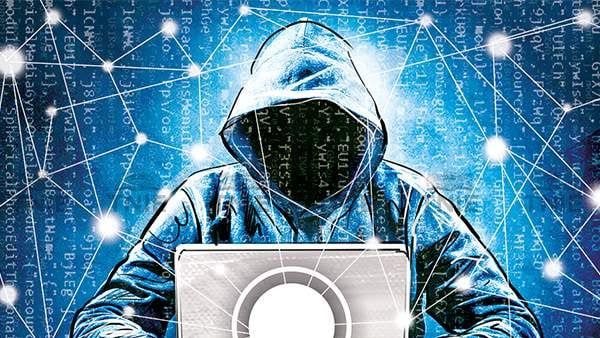Author: Harpreet Kaur, Maharishi Markandeswar (Deemed to be University)
Abstract
India’s judicial system is currently facing unprecedented systemic challenges—most notably, an enormous backlog of pending cases and procedural delays that obstruct timely access to justice. In an effort to overcome these issues, Artificial Intelligence (AI) is being increasingly considered as a practical tool to improve efficiency, transparency, and accessibility within the judicial framework. Initiatives like the e-Courts Project, SUVAAS (Supreme Court Vidhik Anuvaad Software), and SUPACE (Supreme Court Portal for Assistance in Court Efficiency) mark the judiciary’s progressive shift toward a technology-enabled system of justice delivery.
This article examines the significance of AI in the Indian judicial system, assesses its current applications, addresses emerging legal and ethical concerns, and highlights the need for a cautious balance between technological advancement and the core principles of judicial integrity.
The Indian judiciary has already begun deploying purpose-built algorithms trained using machine learning and deep learning techniques for a range of administrative tasks. These include scheduling hearings, generating cause lists, reviewing evidentiary documents, enabling smart e-filing systems, and managing and notifying case progress. Among the most prominent innovations is SUVAAS, a task-specific algorithm developed by the Supreme Court’s Artificial Intelligence Committee, which significantly simplifies the otherwise complex and time-intensive task of translating judicial orders and rulings into various Indian languages.
To the Point
Why AI is Essential for Indian Courts
The Indian judiciary is currently burdened by multiple structural challenges that severely hamper its efficiency. One of the most pressing issues is the enormous case load, with over 5 crore cases pending across various courts, making delayed justice a systemic concern.
Compounding this problem is India’s inadequate judge-to-population ratio, with only around 21 judges per million people, a figure that falls significantly short of international standards and directly affects the speed and quality of adjudication. Additionally, manual legal research remains a time-consuming task, as judges and legal professionals often spend hours navigating voluminous case files and precedents—an area where AI can prove transformative by swiftly identifying relevant content and summarizing legal arguments. Another critical barrier to justice delivery is language accessibility; most court rulings are issued in English, rendering them incomprehensible to a large segment of the population. Tools like SUVAAS help mitigate this by offering AI-driven translations into regional languages, thereby promoting inclusivity. Lastly, there is a growing need for consistency and predictability in judicial outcomes, and AI’s ability to recognize patterns across case law and precedents can aid in fostering more uniform and analytically sound decision-making across the judiciary.
Use of Legal Jargon
The integration of Artificial Intelligence into the Indian judiciary brings several key concepts into focus. Pendency refers to the vast number of cases that remain unresolved, posing a significant challenge to timely justice delivery. To address this, enhancing judicial efficiency—the courts’ capacity to manage and dispose of cases effectively—is essential. Equally important is ensuring access to justice, a right enshrined under Article 39A of the Constitution, which guarantees every individual the opportunity to seek legal redress, regardless of economic or social status. As courts move toward digitization, converting physical case files and records into digital formats, the potential for faster and more transparent proceedings increases. However, this technological shift must also respect the principle of natural justice, which mandates fair and unbiased legal processes for all parties involved.
Moreover, judicial accountability must remain a cornerstone of this transformation, requiring judges to uphold integrity, transparency, and impartiality in their conduct. Finally, with the increased reliance on AI and digital tools, data privacy becomes a critical concern, necessitating robust safeguards to protect sensitive personal and legal information handled by these systems.
The Proof
National Judicial Data Grid (NJDG):
As per recent data, over 5 crore cases remain pending in Indian courts, with the bulk lying before district and subordinate courts. The reason for the delay is busy courts for which people face difficulties in getting justice.
E- Courts Mission Mode Project:
This mission was Launched under the National e-Governance Plan, this project aims to digitalize court records and processes to improve judicial compliance. Over 18,000 courts have been computerised under Phase II.
SUPACE (2021):
An initiative of the Supreme Court, SUPACE uses AI to assist judges by extracting relevant facts, precedents, and legal summaries, thereby reducing research time.this saves the time and help in determining actual data and pronouncing fair judgment.
SUVAAS:
A software designed to translate judgments into regional languages using advanced machine learning, ensuring wider accessibility in accordance with Article 348 of the Constitution.
NITI Aayog’s 2018 Paper on AI:
Identified the judiciary as a high-impact sector for AI, recommending its use in improving legal analytics and document review.
Law Commission Recommendations:
Multiple reports (e.g., 230th and 245th) have highlighted the urgent need for digital reforms in the justice delivery mechanism.
Relevant Case Laws
State of Maharashtra v. Praful B. Desai [(2003) 4 SCC 601]
In this judgment ,The Supreme Court allowed video conferencing as a valid method for recording witness testimony.It marked the judiciary’s early acceptance of technology in evidence collection, promoting efficiency without violating due process.
K.S. Puttaswamy v. Union of India [(2017) 10 SCC 1]
The Hon’ble Court affirmed that the Right to Privacy is a fundamental right protected under Article 21 of the Constitution. This decision has direct implications for AI tools used in courts, requiring them to ensure data protection and privacy safeguards.
Anuradha Bhasin v. Union of India [(2020) 3 SCC 637]
The Court held that the internet is essential for exercising fundamental rights like free speech and profession.It indirectly endorsed the use of digital tools in justice delivery, especially for remote and marginalized populations.
Swapnil Tripathi v. Supreme Court of India [(2018) 10 SCC 639]
This cases judgement approved live-streaming of constitutional bench proceedings, enhancing transparency in the judiciary.It Signaled a move towards open courts and public participation through digital access.
Sourabh Sharma v. Union of India, Delhi High Court (2020)
It Upheld the validity of virtual hearings during the COVID-19 pandemic and Reinforced the principle that justice must not be halted, even in emergencies, and that technology can ensure continuity in legal proceedings.
Illustrative Use of AI in Courts
Consider a judge dealing with a complex property dispute.
Without AI: The judge would manually sift through hundreds of documents, verify facts, and match them with case laws.
With SUPACE: The judge inputs the facts into the portal, which processes thousands of judgments and highlights key precedents and contradictions in minutes.
Similarly, when a litigant from a rural area wants to read a High Court judgment in their language, SUVAAS translates the text from English into Hindi or other regional languages with legal accuracy.
Conclusion
AI is not a substitute for human judges, but rather a powerful ally in making the justice system more efficient, inclusive, and accessible. The Indian judiciary’s gradual integration of AI tools such as e-Courts, SUVAAS, and SUPACE shows commendable progress. However, there is a pressing need for regulatory frameworks, ethical guidelines, and human oversight to ensure responsible usage. It is crucial to strike a balance between embracing technological advancement and upholding constitutional mandates like privacy, fairness, and accountability.
Recommended Actions:
Drafting national guidelines for AI usage in courts.
Mandatory training programs for judicial officers and court staff.
Ensuring algorithmic transparency and open-source review mechanisms.
Prioritising privacy protections and cyber security for legal data.
India’s pursuit of smart justice is not a distant dream—it is a journey already underway, needing continued investment, monitoring, and adaptation.
FAQS
Q1: Will AI ever replace judges in India?
No. AI tools are designed to assist, not replace, judicial officers. The power to adjudicate remains exclusively with human judges.
Q2: How does AI help in delivering justice?
AI helps by reducing the time spent on legal research, summarising lengthy case files, providing language translations, and managing case data efficiently.
Q3: What are SUVAAS and SUPACE?
SUVAAS is an AI tool for translating judgments into Indian languages. SUPACE helps judges by streamlining the analysis of case files and relevant legal precedents.
Q4: Is using AI in courts legally valid?
Yes. Several judicial pronouncements have supported the use of technology in courts, provided it upholds the principles of fairness and due process.
Q5: What constitutional provisions relate to the use of AI in courts?
Key provisions include:
Article 14 (Right to Equality)
Article 21 (Right to Life and Privacy)
Article 39A (Equal access to justice)
Article 348 (Language of the courts)
Q6: What are the possible risks of AI in judiciary?
Risks include misuse of sensitive data, bias in algorithms, lack of transparency, and the danger of over-reliance on machine-generated outcomes.
Q7: Are there global examples of AI in the legal sector?
Yes. Estonia has implemented AI to resolve small claims. The US and China also use AI for sentencing analytics and case management.
Q8: What is the role of e-Courts?
The e-Courts project digitalises court records and enables services like e-filing, digital orders, and real-time case tracking.





